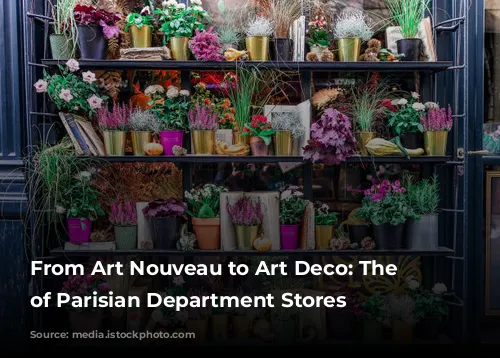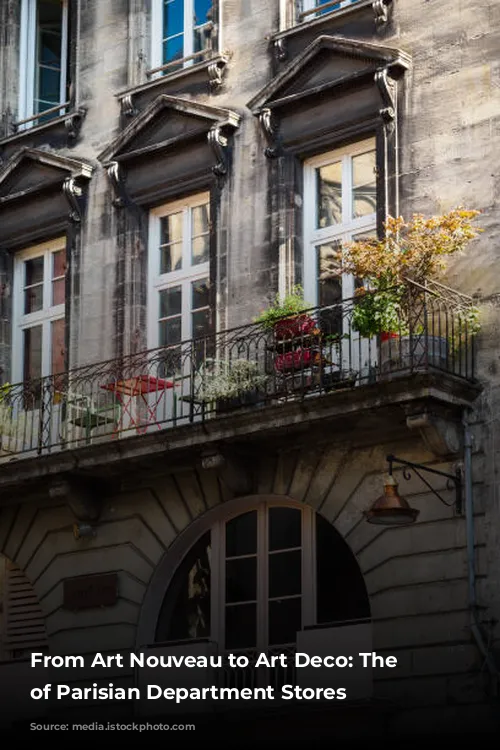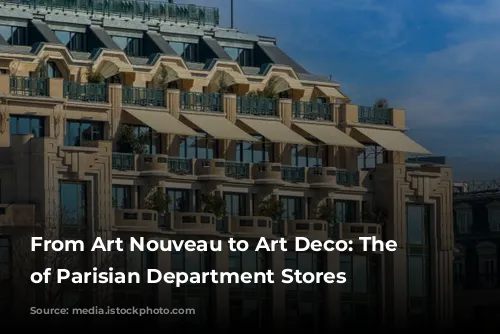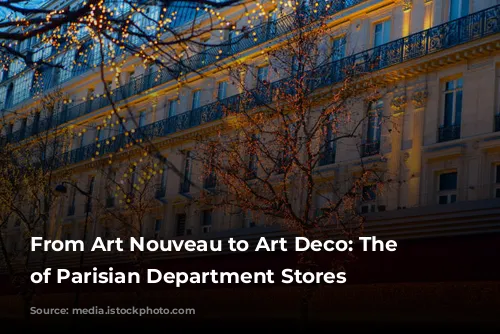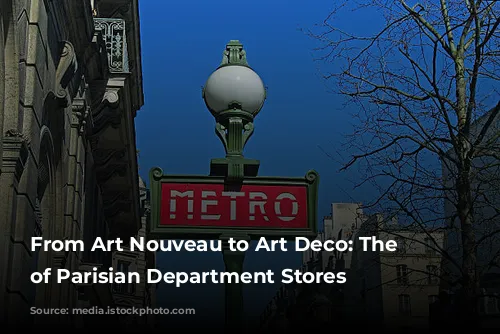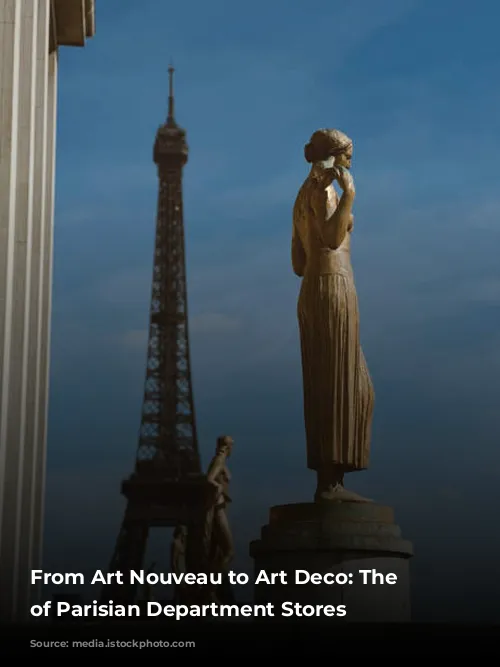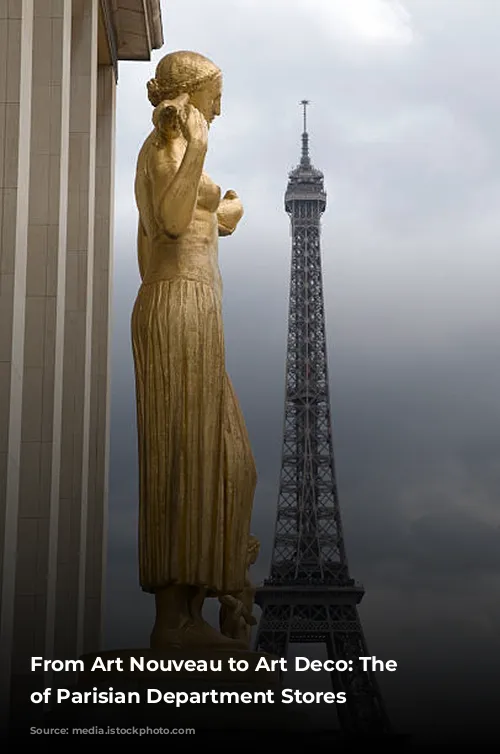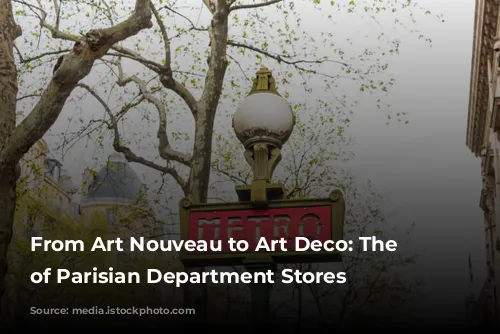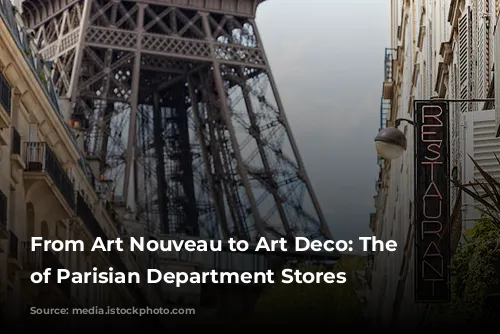Parisian department stores, true symbols of commerce, underwent a significant transformation in the 1920s, transitioning from the ornate Art Nouveau style to the sleek and modern Art Deco. This shift reflected not only evolving tastes but also the changing needs of a burgeoning consumer society.
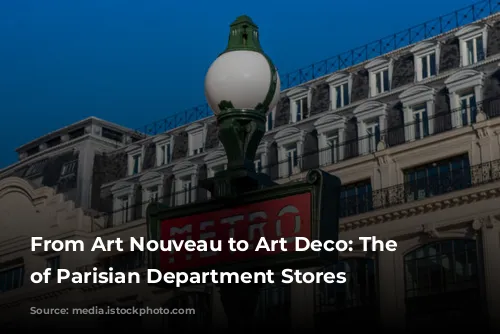
The Rise of Parisian Department Stores
In the mid-19th century, Parisian department stores emerged as havens of luxury and indulgence, catering to a wealthy clientele. These grand retail spaces were architectural marvels, incorporating glass and iron domes and skylights to flood the interiors with natural light. The prevailing Art Nouveau style, with its swirling lines, floral motifs, and feminine aesthetic, seemed a perfect fit for these opulent spaces. Stores like the Louvre district’s department stores, La Samaritaine, Printemps, and Galeries Lafayette became iconic examples of this era.
However, as the 20th century dawned, a new era of consumerism emerged. Mass production fueled a desire for streamlined design and functionality, leading department stores to seek a fresh aesthetic that reflected this shift.

Art Deco: A New Era in Retail Design
The 1920s saw the rise of Art Deco, a style characterized by geometric shapes, bold lines, and a focus on practicality. This aesthetic, with its roots in the International Exhibition of Decorative Arts of 1925, captivated designers and retailers alike. It offered a clean, modern look that was both visually appealing and conducive to showcasing merchandise effectively.
Several Parisian department stores embraced Art Deco, transforming their interiors and exteriors to embody this new style. Le Bon Marché, under the direction of Louis-Charles Boileau, adopted the Art Deco aesthetic, as did the Galeries Lafayette (Jean Hiriat, Georges Tribout, and George Beau) and La Samaritaine (Henri Sauvage). The Trois Quartiers (Madeleine), established in 1829, underwent a complete makeover in 1932 under architect Paul-Louis Faure-Dujarric, adopting the signature features of Art Deco – straight columns, expansive windows, and a focus on accessibility.
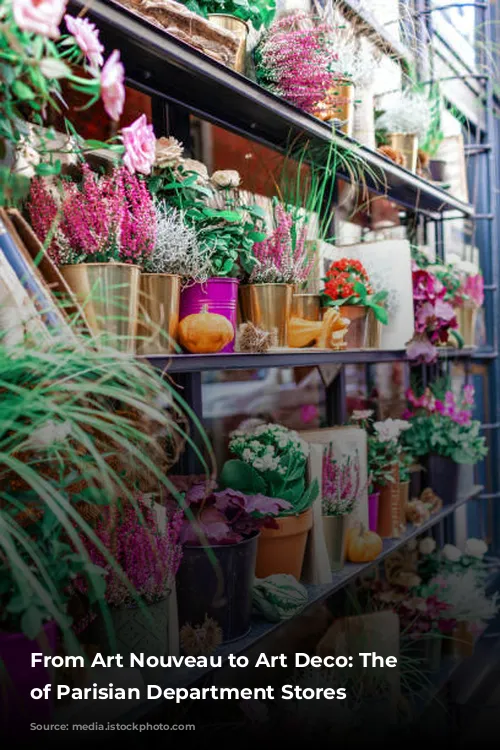
Technical Advancements and Architectural Innovation
The Art Deco renovation of Parisian department stores went beyond mere aesthetics. These transformations incorporated the latest technological advancements, enhancing the shopping experience for customers. Improved lighting, electrical ventilation, and the introduction of escalators created a more comfortable and efficient environment.
Le Bon Marché, in particular, showcased the Art Deco style’s elegance and functionality. Its slightly curved facade, with its geometric forms, exuded sophistication. The large central lobby was bathed in natural light, streaming through the majestic white and gold windows.
The Galeries Lafayette, under the creative direction of Pierre Patout, took a bold approach, opting for windowless facades (no longer visible today) to draw customers’ attention to the products on display. Instead of windows, long vertical bow windows, crafted by the famed Lalique workshops, provided natural light. The innovative facade, inspired by cruise ships, featured tall chimneys that adorned the rooftop.
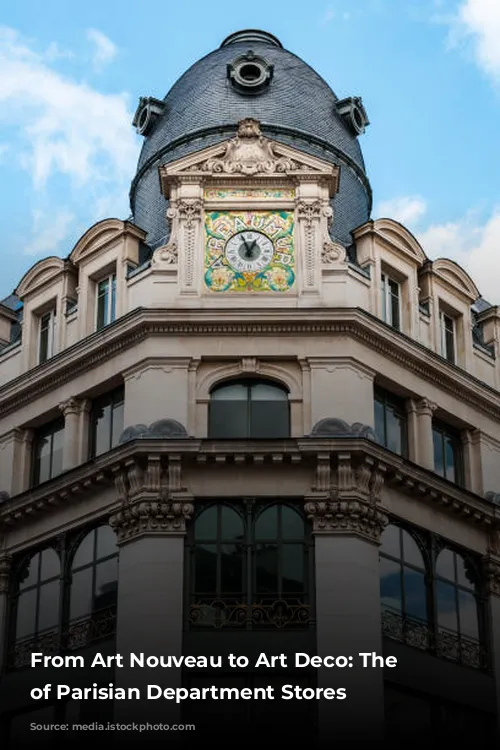
Conclusion
The transformation of Parisian department stores from Art Nouveau to Art Deco reflected a profound cultural shift. The new era of consumerism demanded an aesthetic that was modern, functional, and visually appealing. Art Deco, with its clean lines, geometric patterns, and focus on practicality, perfectly captured the spirit of the times. These architectural masterpieces, embracing technical advancements and innovative design, not only showcased products but also established a new standard for retail spaces, setting the stage for the modern department stores we know today.
